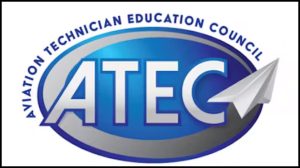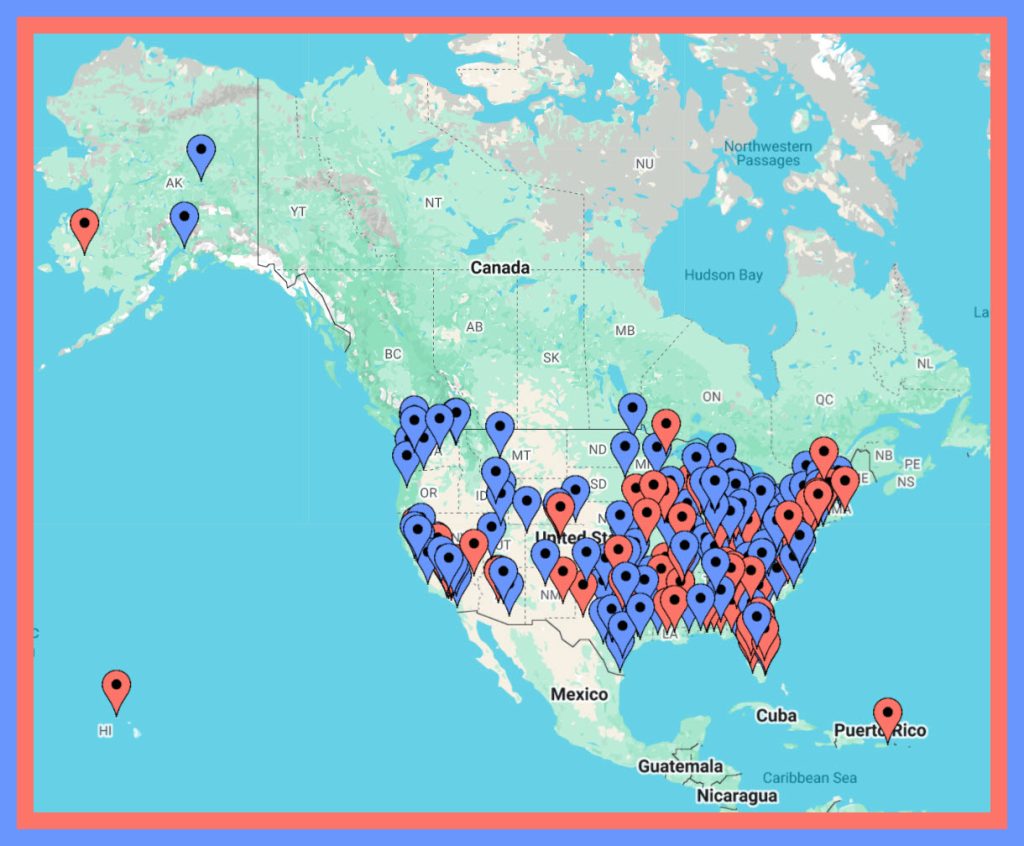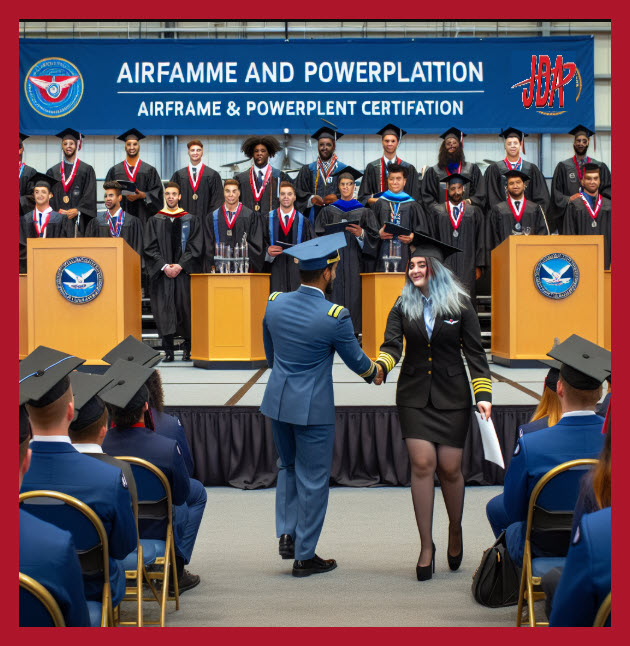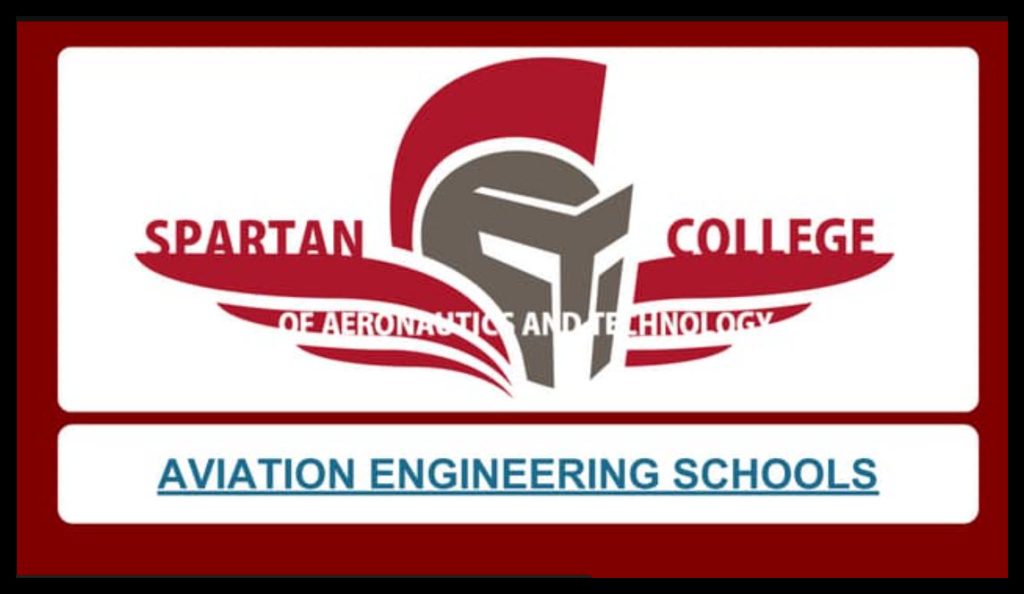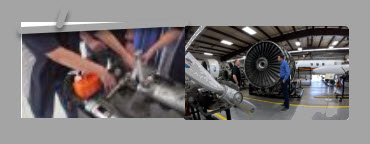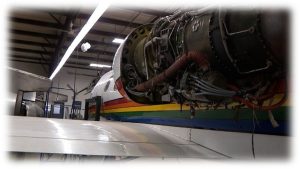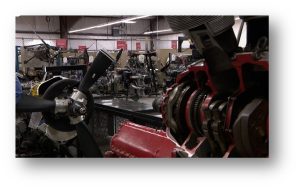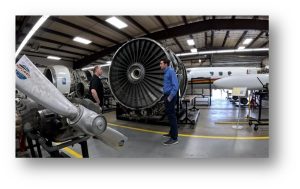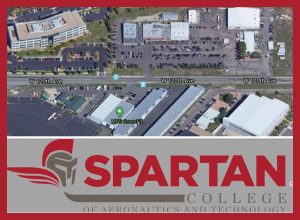AMT DEMAND : PREDICTION & ACTION

The subject of this post derives from the three articles (attached below) heralding ACTION in the Aviation Maintenance Technician school sector. The news is good, but the PREDICTION of future need indicates that INCREASED RECRUITMENT, QUALIFICATION and RETENTION of these SKILLED PROFESSIONALS must occur.
The well-known Boeing 2025 Pilot and Technician Outlook PREDICTS:
- 710,000 new AMTs will be needed globally over the next 20 years.
- This demand accounts for nearly one-third of the 2.4 million new aviation personnel projected (including pilots and cabin crew).
- Demand is driven by:
- Fleet expansion, especially single-aisle aircraft.
- Retirements and attrition—two-thirds of new hires will replace existing workers.
- Increasing reliance on data-driven and tech-intensive MRO operations.
More detailed data shows what progress is being realized and where additional focus may be needed:
+ Enrollment Growth: AMTS enrollment rose by 6% in 2023, signaling increased interest in aviation careers.
+ Certification Surge: New FAA mechanic certificates jumped 32%, ending a three-year deferral trend.
+ Veteran Integration: Certifications among veterans rose 32%, but only ~1,500 of the estimated 22,000 qualified veterans annually pursue A&P certification.
+ Work-Based Pathways: Schools are developing hybrid and work-based certification programs, such as those led by Choose Aerospace, to make training more accessible.
- Instructor Shortages: Many AMTS operate at just 65% capacity due to lack of instructors and resources.
- Testing Bottlenecks: A shortage of Designated Mechanic Examiners (DMEs) is slowing certification; the FAA is working to expand DME availability.
- Awareness Gaps: Many potential students, especially veterans and underrepresented groups, are unaware of aviation career pathways.
- Gender Disparity: Women make up only 8% of the mechanic workforce, though representation among new certificants is slowly improving
- U.S. pedagogical policies strongly supports Career and Technical Education (CTE) as a vital pathway within the broader educational system. These statutory and regulatory enhancements include:
-
- Carl D. Perkins Act (2018): Funds CTE programs and promotes integration of academic and technical skills, especially for underserved populations.
- School-to-Work Opportunities Act (1994): Encouraged partnerships between schools and employers to prepare students for the workforce.
- Individuals with Disabilities Education Act (IDEA, 2004): Requires transition planning that often includes technical and vocational pathways.
- No Child Left Behind (2001): While focused on academic standards, it indirectly impacted CTE by pushing schools to align technical courses with core subjects like math and reading.
- STEM and Technology Integration: U.S. education reform increasingly emphasizes integrative STEM learning, where technology and engineering design are used to teach science and math in real-world contexts.
- TPACK Framework: A widely adopted pedagogical model that blends technological, pedagogical, and content knowledge, supporting the use of tech-based instruction across disciplines.
- ISTE Standards: Adopted nationwide to guide educators in using technology to create scalable and equitable learning experiences.
The AVIATION TECHNICIAN EDUCATION COUNCIL (ATEC) [1]and industry partners are pushing hard to:
- Fill unused AMTS seats (12,000 nationally).
- Expand early testing for high school students.
- Improve military-to-civilian transitions.
- Increase funding for technician workforce grants.
ATEC has mapped out the locations of the existing Part 147 schools around the US:
ATEC’s prognosis for this challenge:
- 123,000 new technicians will be needed in North America alone.
- demand is outpacing supply, despite recent improvements in the mechanic pipeline.
- A 9% shortfall in U.S. technician supply is projected by 2027.
- 83% of current U.S. AMTs are expected to retire within the next dec
The Boeing PTO prediction of a significant shortfall for AMTs, a profession which pays well, the priority placed on added technical educational institutions for high demand technical careers and the availability of technical support to earn FAA Part 147 approval is a RECIPE for community colleges, junior colleges and for profit learning ventures to OPEN AMT schools. With expert guidance, such a new technical training institution can develop an alliance with airlines (national, LCCs, regional and international).
Colorado schools working to get more airplane technicians off the ground as demand climbs
Denver7 looked into possible solutions to recruit younger workers amid a projected shortage
BROOMFIELD, Colo. — Aircraft technicians provide a crucial job, but the industry is looking for ways to recruit and retain more new hires amid climbing air travel demand.
Over 60 years, thousands of aircraft mechanics have earned their wings at Spartan College’s campus in Broomfield. The aviation school, with its main campus in Tulsa, Oklahoma, has been training pilots and aircraft maintenance technicians for nearly a century.
“We work on the airframe, gear, landing gear, hydraulics, pneumatic systems, electronics, all the way to the turbine engine,” said Nicholas Brown, Spartan College’s Broomfield campus president and the chief academic officer for the school’s four other campuses.
Brown told Denver7 there are about 400 students on the Broomfield campus at any given time throughout the year, and Spartan’s aircraft maintenance technician program is 23 months long.
“We give students classroom instruction about 50% of the time, and the other 50% is going to be hands-on,” Brown explained. “Demonstrating the practical skill set to be eligible for their certification exams upon graduation.”
A Federal Aviation Administration–designated mechanics examiner validates that the training and exams meet professional standards.
Denver7 spoke with Lionel C. Taylor, a recently retired aircraft maintenance technician from California who worked for American Airlines for more than 30 years. Despite doing only occasional contractor work over the last few years, he said he seems to still be in demand for technician jobs.
“When I go through my email, I see that I’m being offered positions from companies all across America, and I haven’t filled out a resume in a long time,” he said with a chuckle.
Boeing said the industry will need MORE THAN 700,000 NEW TECHNICIANS to meet global demand over the next 20 years. A 2022 report from consulting firm Oliver Wyman looked into the issue, predicting a roughly 25% shortfall in North America by 2027.
Taylor said the industry was good to him, but over his three decades, he noticed younger workers often left for different jobs because of late hours or the blue-collar nature of the job.
“There was a time at certain points in my career where we needed more folks, and they weren’t around, so we had to do more with less,” he said. “Overall, we had the manpower when needed.”
Taylor reiterated, however, that he never performed maintenance that would have compromised safety during his career.
Shortage
Aircraft technicians provide a crucial job, but the industry is looking for ways to recruit and retain more new hires amid the climbing air travel demand.
Taylor recommends the industry for job-seekers, and said the industry could help fill the gap by doing more advertising and removing the stigma around the difficult parts of the job.
“It’s a good position,” Taylor said. “You don’t have to get dirty being an aircraft maintenance guy. I mean, you could work on the avionics department. You can work in the technical portion, dealing with log books, computers. You can even go into other fields, you know, unmanned aerial vehicles.”
Brown said increasing awareness for the next generation should be a priority.
“More often times than not, when I go to a classroom and talk to students at the K-12 level, they didn’t even know that this was an option for them,” he said. “And so really opening their eyes to that.”
Brown also said changes have recently been made at Spartan College and other schools nationwide after working with the FAA.
“We went through an update to our training model in September of ’22,” he explained. “They updated the curriculum to be more focused towards where the industry demands are today… commercial aviation… business jets. Primarily beforehand, it was heavily focused on… general aviation. So there’s some things that we brought into our curriculum to meet those changes and also help our students in better preparing them for the industry.”
Damian Hallam, Program Chair of Spartan College’s aircraft maintenance technician program (left) stands with Denver7’s Ryan Fish (right) inside a hangar at the school’s Broomfield campus.
The Oliver Wyman report proposes solutions to attract and retain Gen Z workers, including an increase in government subsidies and free tuition programs for AMT schools, introducing technologies like artificial intelligence, virtual reality and drones into curricula, and diversifying the workforce by hiring more women and minorities.
Despite the pressure on the industry and high-profile incidents involving airplanes, including the landing gear fire at Denver International Airport over the weekend, members of the aviation and technician industry say air travel is incredibly safe.
“Working in this field for as long as I have, I get on a plane every time and do not worry about what’s going to happen,” Brown told Denver7. “The safety record is just phenomenal… I’d rather fly in an aircraft and go to another city than get in a car and navigate I-70.”
Wayne Community College Aviation Students Achieve Major Milestone in Aircraft Mechanic Certification
July 30, 2025 Deonna Starks
GOLDSBORO, N.C. – Eleven students in Wayne Community College’s Aviation Systems Technology program have reached a significant milestone in their pursuit of becoming certified aircraft mechanics, earning certificates that advance them toward Federal Aviation Administration (FAA) certification.
Pilot and Aircraft Maintenance Training Group Spartan Highlights Technician Training in 2025
- Spartan College has trained thousands of aircraft mechanics at its Denver‑area (Broomfield) campus over the past 60+ years, while its main campus in Tulsa, Oklahoma offers additional aviation instruction.
- The program admits approximately 400 students annually and spans 23 months, equally split between classroom theory and hands‑on instruction, fully preparing graduates for FAA Airframe & Powerplant certification exams.
- “We work on the airframe, gear, landing gear, hydraulics, pneumatic systems, electronics, all the way to the turbine engine,” said Nicholas Brown, Broomfield Campus President and Spartan’s Chief Academic Officer.
- “We give students classroom instruction about 50% of the time, and the other 50% is going to be hands‑on… to be eligible for their certification exams upon graduation,” Brown explained.
- The curriculum was updated in September 2022 to reflect current industry needs—shifting emphasis from general aviation toward commercial and business aircraft training, including turbine engines and advanced systems.
- “More often times than not, when I go to a classroom and talk to students at the K‑12 level, they didn’t even know that this was an option for them,” Brown said, highlighting the need for early awareness efforts.
- Boeing forecasts a need for 123,000 new maintenance technicians in North America over the next two decades, while Oliver Wyman anticipates a 25% shortage by 2027.
About Spartan College of Aeronautics and Technology
Spartan College of Aeronautics & Technology, established in 1928 and headquartered in Tulsa, Oklahoma, is a private aviation institution with satellite campuses including the Denver‑area Broomfield campus. It has trained over 100,000 pilots and technicians nationwide and abroad.
[1] ATEC’s professional staff and Board Of Directors are an impressive, knowledgeable group. In particular, its executive director, Crystal Maguire is an alumna of the Sarah MacLeod school of aviation regulatory knowledge. 
